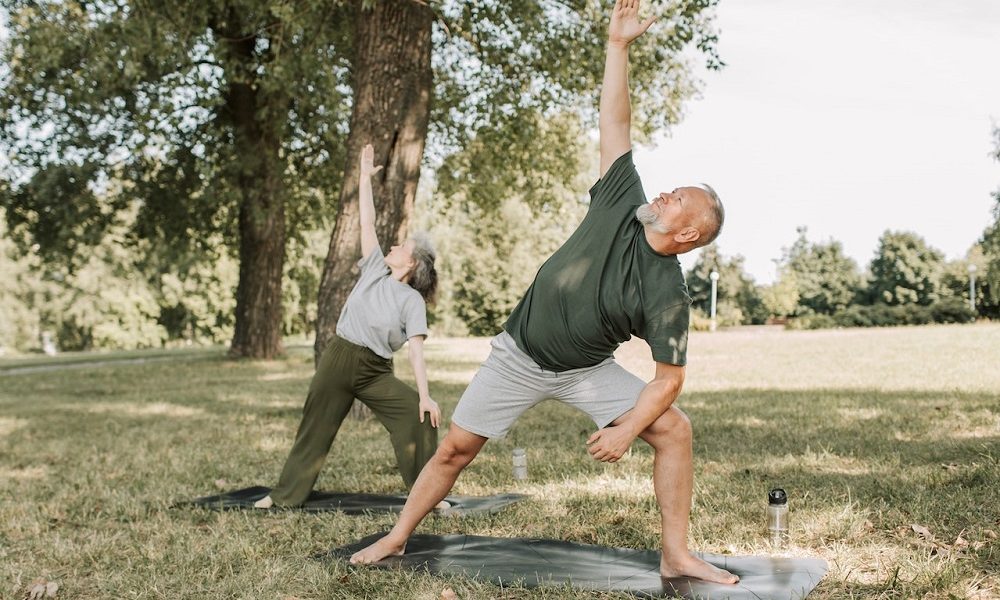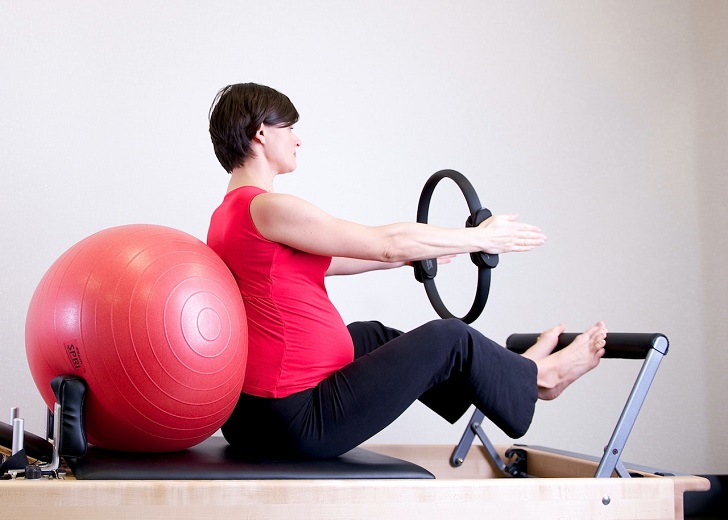
The Benefits of Working Out After 40

As we age, our bodies undergo various changes that can impact our overall health and well-being. However, maintaining an active lifestyle and incorporating regular exercise into our daily routine can be incredibly beneficial, especially for those over 40.
While it’s natural to slow down with age, staying active can help combat the effects of aging and improve physical, mental, and emotional health. This article will explore the numerous advantages of working out after 40 and why it’s never too late.
Improved Muscle Mass and Strength:
As we age, we tend to lose muscle mass and experience a decline in strength. Regular exercise, particularly strength training and resistance exercises, can help counteract this muscle loss and even lead to an increase in muscle mass. Strong muscles contribute to better physical performance and support joint health and stability, reducing the risk of injuries.

Pixabay/ Pexels | Exercise not only changes your body; it changes your mind, your attitude, and your mood
Enhanced Bone Health:
Bone density decreases as we age, increasing the risk of osteoporosis and fractures. Engaging in weight-bearing exercises like walking, jogging, dancing, and weightlifting can help stimulate bone growth and improve bone density, reducing the risk of bone-related conditions.
Cardiovascular Health:
Heart health is crucial at any age but becomes even more important as we age. Regular cardiovascular exercises, such as brisk walking, cycling, swimming, and aerobic workouts, help strengthen the heart and improve blood circulation. This, in turn, reduces the risk of heart disease, high blood pressure, and other cardiovascular issues.
Weight Management:
Metabolism tends to slow down with age, making it easier to gain weight and harder to shed those extra pounds. Regular physical activity can boost metabolism, making weight management more achievable. Combining exercise with a balanced diet can help maintain a healthy weight and reduce the risk of obesity-related health problems.

Jessica Monte/ Pexels | Don’t let age dictate your limits
Increased Flexibility and Balance:
Stretching exercises, yoga, and Pilates are excellent choices for those over 40, as they help improve flexibility and balance. These activities can reduce the risk of falls and injuries, which become more prevalent as we age.
Stress Relief and Mental Health:
Exercise is a powerful tool for reducing stress and anxiety. Physical activity stimulates the release of endorphins, which are natural mood boosters. Working out after 40 can significantly improve mental health, promoting a more positive outlook and reducing the risk of depression.
Cognitive Function:
Regular exercise has been linked to improved cognitive function and a reduced risk of cognitive decline. Engaging in activities that challenge the brain, such as dance classes or learning a new sport, can also support brain health and memory.

Puwadon Sang-ngern/ Pexels | Working out after 40 offers a myriad of benefits that contribute to better physical, mental, and emotional health
Social Interaction:
Working out after 40 doesn’t have to be a solitary endeavor. Joining fitness classes, sports clubs, or recreational groups can provide opportunities for social interaction, fostering new friendships, and combating feelings of loneliness.
Better Sleep:
Many adults over 40 struggle with sleep disturbances, negatively impacting overall health. Regular physical activity can help improve sleep quality and promote a more restful night’s sleep, leading to increased energy levels and improved mood during the day.
Increased Longevity:
The cumulative effects of regular exercise contribute to a longer and healthier life. Studies have shown that physically active individuals tend to live longer and have a lower risk of chronic diseases compared to sedentary individuals.
More in Fitness
-
`
The Physical Signs of Hunger and How Mindful Eating Makes a Difference
Hunger is one of the most basic yet essential signals our body uses to communicate its need for energy. However, many...
December 15, 2024 -
`
Why Did Chris Pratt Call Anna Faris Before Proposing to Katherine?
Chris Pratt, the beloved star of “Guardians of the Galaxy,” made headlines when he revealed that he called his ex-wife, Anna...
December 3, 2024 -
`
6 Proven Tips to Tackle Insurance Claim Denials Successfully
Claim denials are a common hurdle for healthcare providers and professionals, even for those who follow the necessary procedures to avoid...
December 1, 2024 -
`
5 ‘Bad’ Fitness TikTok Trends You Shouldn’t Follow
TikTok has become a haven for creative fitness advice. But not all trends are worth your time or your health. From...
November 23, 2024 -
`
Does Drinking Water Affect Adrenal Hormones?
Drinking water is often seen as a simple way to stay hydrated, but it has deeper effects on our body than...
November 14, 2024 -
`
Why We Feel the Loss of Celebrities So Deeply?
Celebrity grief might sound strange at first. After all, most of us have never met these famous figures in person, yet...
November 5, 2024 -
`
Are High Deductible Insurance Plans as Ideal as They Appear to Be?
High deductible insurance plans have been a hot topic for years, especially as healthcare costs continue to rise. For many Americans,...
October 31, 2024 -
`
How Training Load Data Can Transform Your Exercise Routine
Tracking progress during workouts is challenging. Simple metrics like mileage or time don’t show the whole picture. Understanding the overall effort...
October 26, 2024 -
`
Katy Perry’s Weight Loss Journey: Secret Diet Tips Revealed
Katy Perry’s weight loss journey has been making headlines, with the pop star shedding 20 pounds over the past few months....
October 16, 2024















You must be logged in to post a comment Login